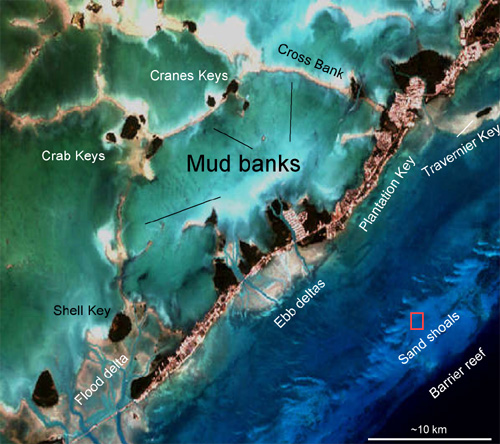|
|
|
Sand Shoal Depositional Environments
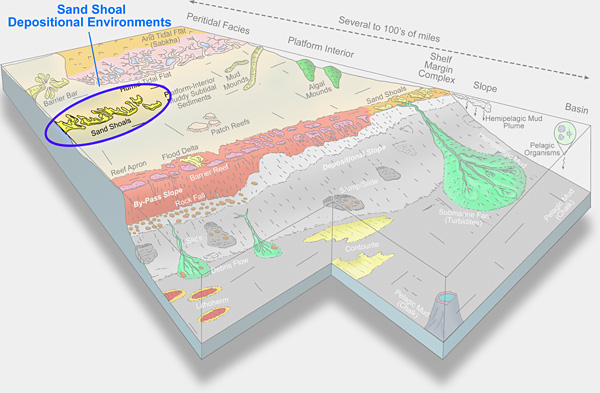
Where
the fetch of the wind creates wave action or where other
currents cross a shelf, sand shoals can develop, especially
in areas of positive topographic relief. The sands are composed
of local biota winnowed from the adjacent deeper subtidal
environment or are formed by the chemical precipitation
of ooids under higher energy shoaling conditions. The sands
are commonly well sorted, and strongly crossbedded. The
surface will have sand waves and ripples. The sand shoals
can be as small as a few tens of meters wide and tens of
meters long or areally extensive with dimensions of tens
of square kilometers.
|
| |
|
| Large
sand field on the Great Bahamas Platform |
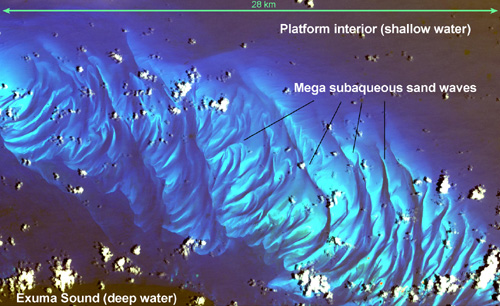 |
| Platform-interior
sand shoals near Eleuthera Island on the Great Bahama
Bank. Distinct sand ridges (dunes) have developed by
wave and tidal currents moving across the bank. Area
of photograph is 28.2 by 46.1 km. NASA/GSFC/METI/ERSDAC/JAROS,
and U.S./Japan ASTER Science Team (http://asterweb.jpl.nasa.gov/gallery/gallery.htm?name=Tarpum). |
|
| |
| . |
| Ooid
sand shoal on the Caicos platform |
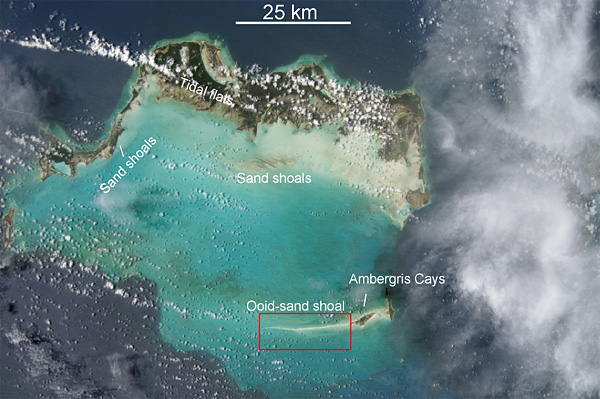 |
| Caicos
platform showing several areas of platform-interior shoals.
A prominant linear ooid-sand shoal extends east-west in the
lee of Ambergis Cays. A close up photograph (box) displays
the surface features of the shoal. Image courtesy of Earth
Sciences and Image Analysis Laboratory, NASA Johnson Space
Center (http://eol.jsc.nasa.gov).
Photograph ID = ESC_large_ISS004_ISS004-E-13320.JPG. |
|
| |
| Sand
sheet on the south Florida platform behind the barrier reef |
| |
| Behind
the Florida reef tract are a series of skeletal sand
shoals. Image by Scientific Visualization Studio, NASA
Goddard Space Flight Center; data courtesy Landsat Project.
Click on red square to see detailed example. |
|
| |
| Rock
Types |
| In
the ancient record this environment is represented by burrowed
to crossbedded grainstones. |
| |
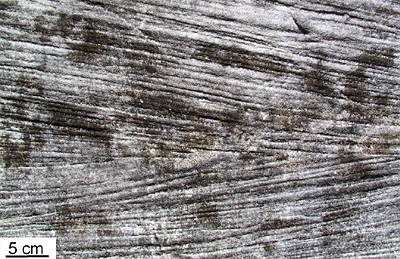 |
| Trough
cross bedding in a platform-interior Lower Cretaceous
shoal composed of ooids and hardened pellets (grainstone).
Upper shoreface facies where daily tidal and wave currents
reworked the sands. |
|
| |
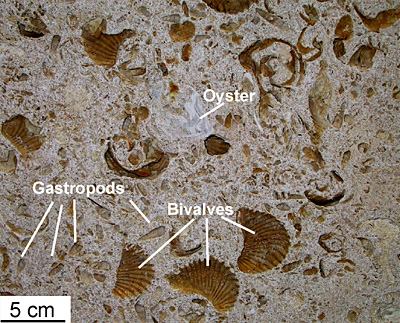 |
| Bioturbated
ooid/hardened pellet sand with larger organisms composed
of bivalves, oysters, and gastropods (grainstone).
Lower shoreface facies (deeper water) where daily
tidal and wave currents were less strong, which allowed
organisms to live in the sand. These sediments were,
however, strongly reworked by storms. |
|
| |
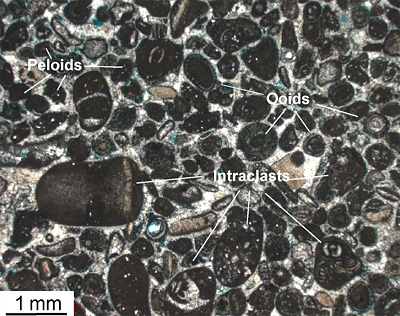 |
| Platform-interior
shoal grainstone composed of ooids, peloids, and intraclast.
|
|
| |
|
|
|
NEXT
|
|







